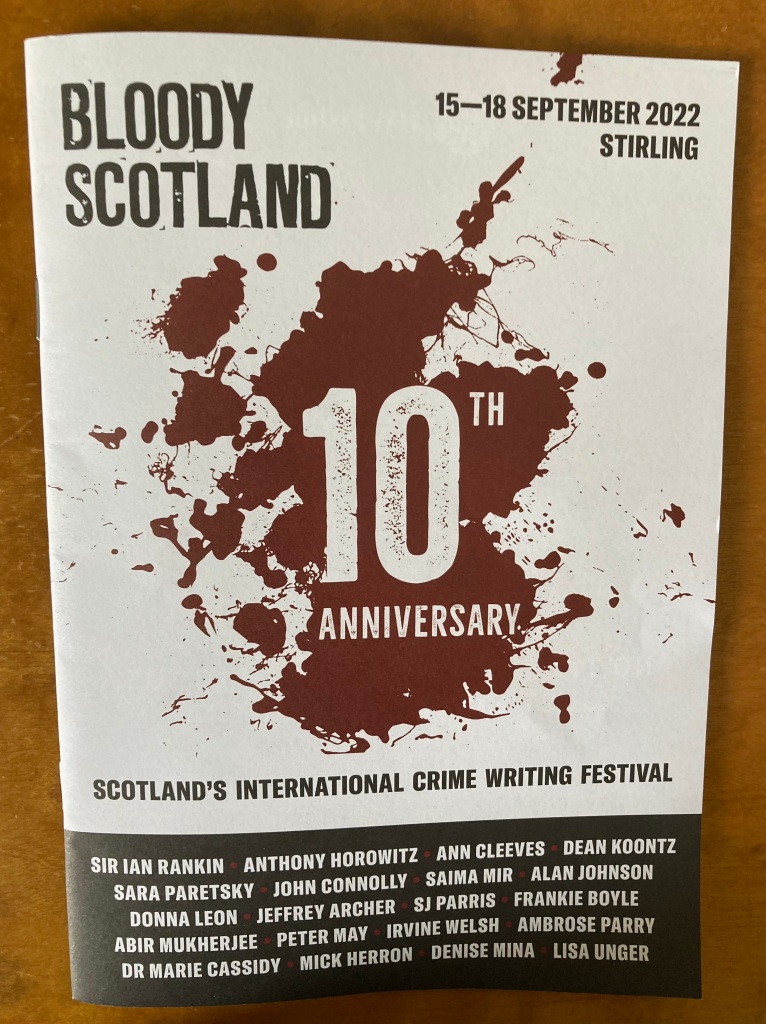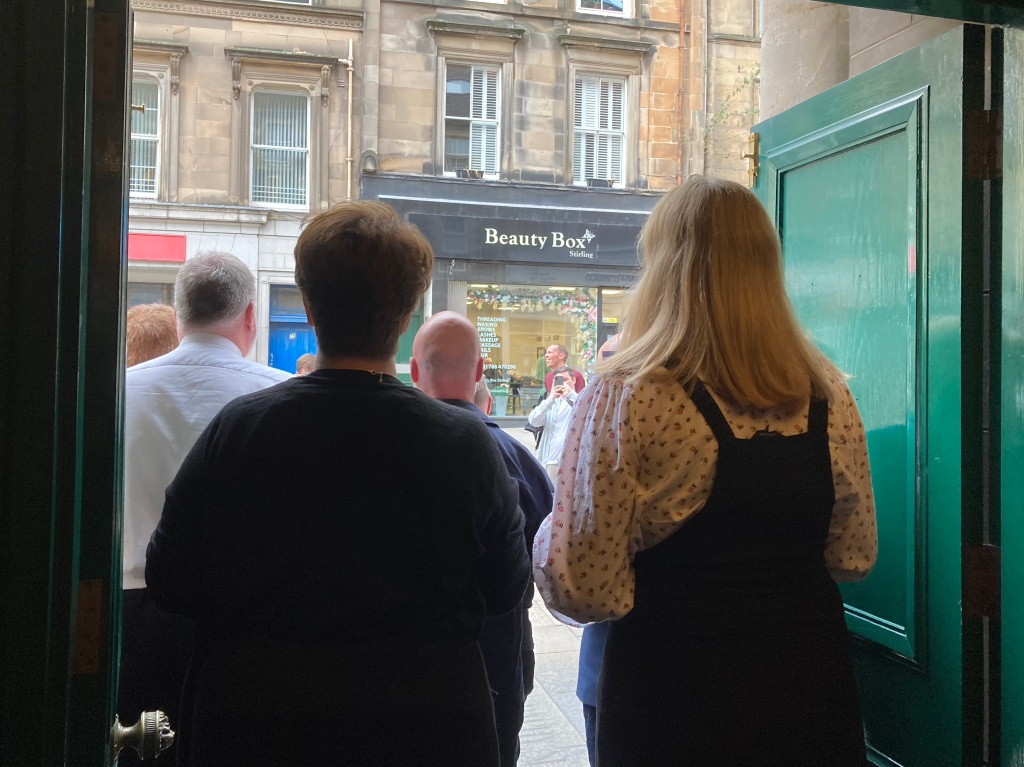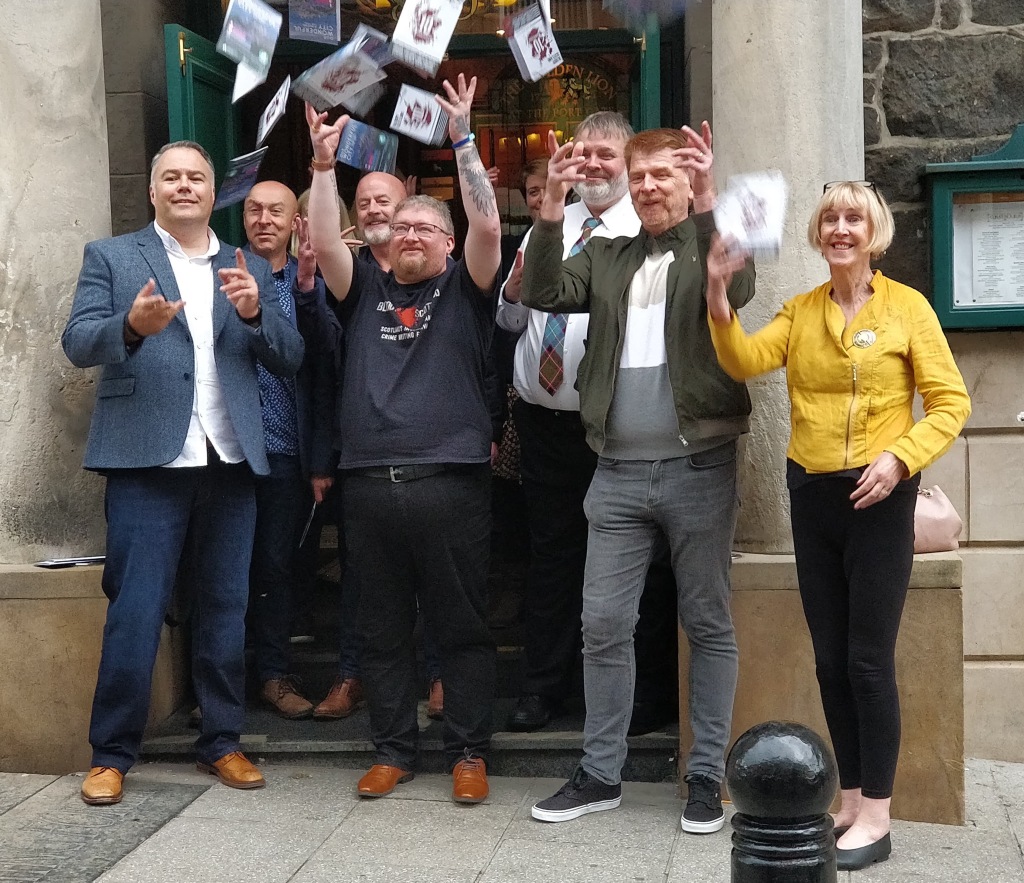She notices things, does Lin Anderson. She’s very kind, and she came up to me to ask ‘did I want a chair?’ I did, and she gave me one. I asked how she knew, and it seems I was leaning on a stack of brown boxes. I was. I just hadn’t noticed.

So there I was, the only one sitting down. Very comfortable it was, too. My friend Helen Grant had to stand, but apparently she prefers that. She’s going to be at the tenth (?) Bloody Scotland in September. High time, if you ask me. She’s as scary as the rest of them.
Between me and the mail chimp I almost didn’t make it, but I was in a position to dash off to the Golden Lion at very short notice this morning, so I did.
You will have noticed my question mark above. I am sure they know what they are doing, but I am equally sure it’s not the tenth Bloody Scotland. One of us will be wrong.* But I was given a chair to sit on, so will not insist on being right.

After some suitable mingling, Bob kicked things off. He’s the boss. He then handed over to Citizen Kane, sorry, Councillor Kane, to talk about how much Stirling loves Bloody Scotland. Then it was back to Bob again, with more information about the sheer wonderfulness of what is to come. And there is a lot.
I was quite excited to find Sara Paretsky on the front cover of the programme, but cynical enough to realise she will Zoom in. So are some of the other grand crime writers. But most are coming here, and I already have a conundrum as to who to see and who to miss. Helen is appearing with ‘my old pal’ Stuart Neville, and new Swedish star David Lagercrantz will be on a panel with Simon Mason, David Fickling’s man in the basement.

Not going to list all the others. Look at the programme. It’s already live. And Crime at the Coo sold out instantly, so don’t even bother trying. Anyway, it’s on from 15th to 18th September, and if you are good with numbers you can see they have added a day.

As we left, Helen and I ended up behind everyone being photographed on the steps of the Golden Lion. I considered trying to look especially silly, but gave up. Having squeezed through, we then joined the throng on the pavement instead.

After which Helen bought me a baked potato across the road.
*That will be me. I’m a foreigner. There is a difference between anniversary and tenth event… Thank you again for the chair.





